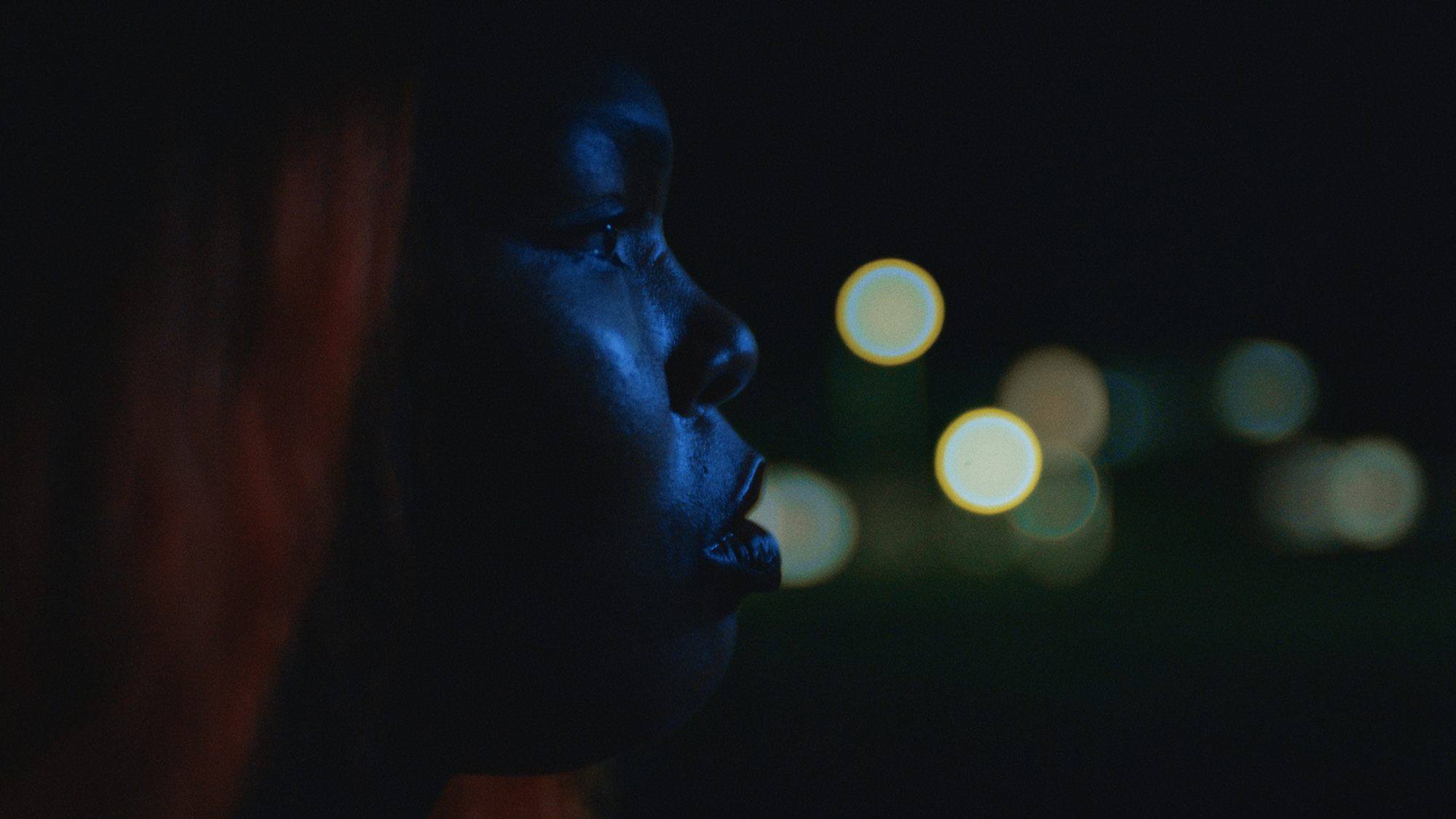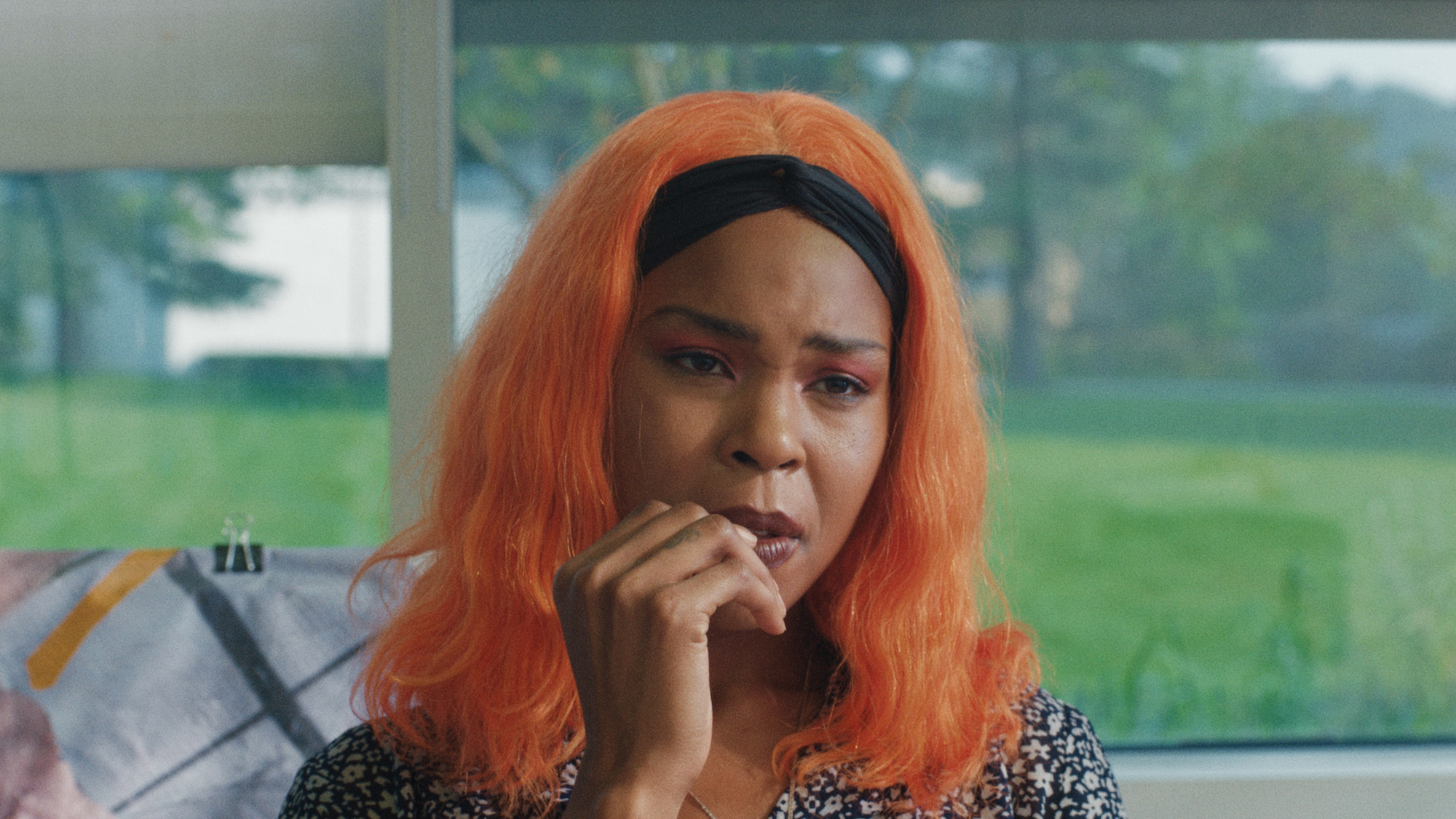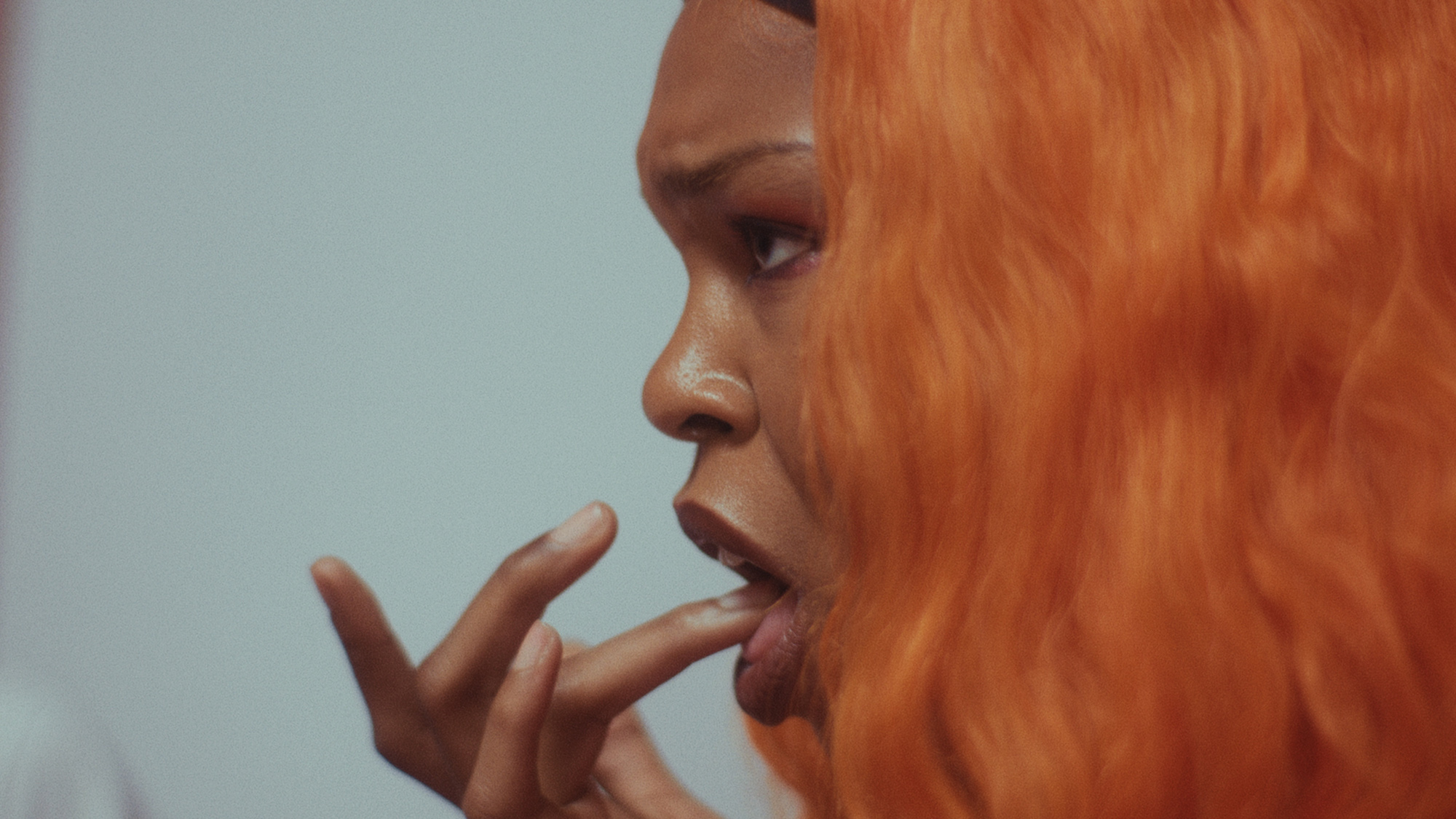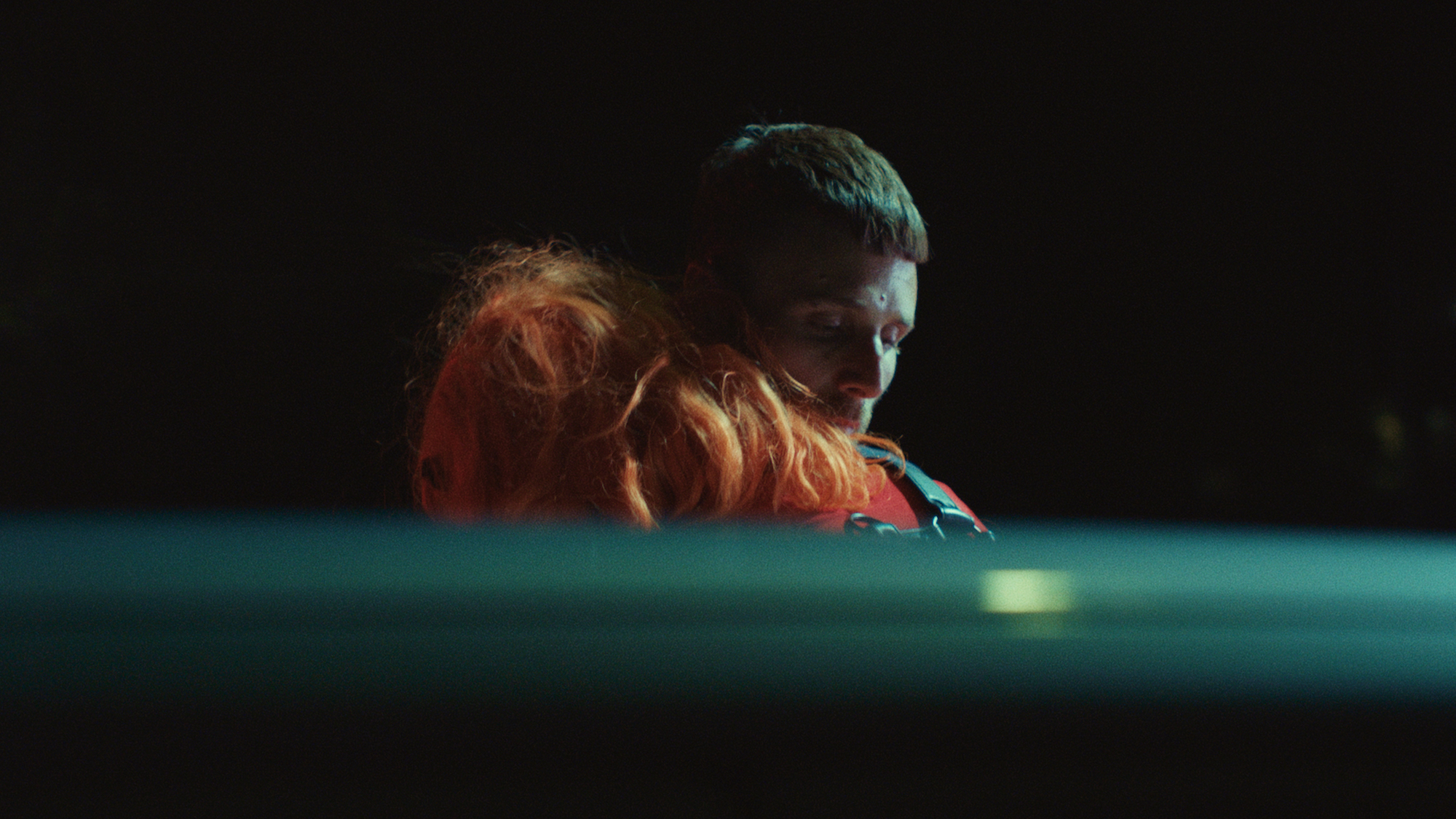The dash joins and the dash moves along. For the Dash column, Mariana Fernández embraces the anxieties of Martine Syms’s debut feature film, The African Desperate (2022), which navigates the hellish boredom and routine aggression of academia’s obsession with saying the right thing.

Martine Syms, The African Desperate, 2022. Video still. 4K video with sound, 99 min. Courtesy of Dominica, Inc.
A former professor of mine summarized the experience of being in graduate school as a balancing act between feeling like shit and feeling like the shit. That’s a succinct way of describing the strain of impostor syndrome particular to BIPOC creative communities—a systemic feeling of inadequacy as endemic to institutions as racism and sexism. This feeling is by design: not everyone is meant to thrive in such spaces. “In the face of these conditions,” Fred Moten and Stefano Harney write in The Undercommons (2013), “one can only sneak into the university and steal what one can.”
Martine Syms’s new feature film, The African Desperate (2022), is set in an elite art institution in upstate New York with remarkable parallels to Bard, where Syms graduated in 2017. Its protagonist, Palace (played by Syms’s friend, artist Diamond Stingily) is in the last semester, the last hours actually, of an MFA program. She already has a work in the Venice Biennale, but success feels doubly overdue and undeserved. Palace doesn’t want a seat at the table, or even in her own dining room. Palace doesn’t want to change the institution from within. She wants to get her degree and get out of those woods.

Martine Syms, The African Desperate, 2022. Video still. 4K video with sound, 99 min. Courtesy of Dominica, Inc.
The opening scene places us in Palace’s final MFA critique. Four professors—all of them white—crowd the room with deadening politeness and racial microaggressions. One asks Palace how she will differentiate herself from other Black artists making “hunter-gatherer” sculpture, and if she grew up in Westside Chicago. (“People like that.”) Another won’t stop bringing up Moten’s notion of impropriety. The scene is a heightened version of what Yaa Gyasi describes as “the dissonance of the black spotlight,” the all-too-common phenomenon of Black artists being dually fetishized and excluded from institutions with socially progressive facades. The film’s title comes from Palace’s reply to a professor urging, goading, her to say what she really feels. Palace responds: “Of course I’m responding to the African Desperate, staking my claim to opacity.” The phrase is not in fact a reference to Saidiya Hartman (as she goes on to explain), but a mistake: she meant to say the African Diaspora. No one notices.
The film’s specificity to an era of pre-Black Lives Matter, pre-COVID institutional culture comes across through its long lexicon of ultra-specific 2017 art world fashions: Rick Owens tote bags and Asai tops; The Undercommons, Moten and Harney’s critique of academia and professionalized labor; Édouard Glissant’s Poetics of Relation (1990). The Black scholarship sprinkled throughout the script ironically, mostly as a way for Palace’s white colleagues and professors to circumvent talking about race, is also the theory that runs through Syms’s practice, this work included. In Poetics of Relation, for example, Glissant defines opacity as an overspilling alterity, a condition that exposes the limits of schemas of visibility and representation that prevent multiple identities from coexisting. In an environment where you are forced to perform 24/7, Palace’s claim to opacity is a way to resist being reduced to a quantifiable difference. The elephant in that room is the same one in most art spaces, where Blackness only registers as a kind of identity politics through which artworks are assigned meaning and their makers, as Gyasi writes, are “revered in one way and reviled in another.”

Martine Syms, The African Desperate, 2022. Video still. 4K video with sound, 99 min. Courtesy of Dominica, Inc.
Throughout the film, there is a palpable sense of dissatisfaction with the promises of artistic freedom that institutional rhetoric has so often failed to deliver. It’s a riff on what Moten and Harney articulate in The Undercommons when they write of the need to refuse the university’s narcissism through practices like dancing, walking, and socializing. But when a version of those same classroom conversations transpires in late-night, drug-fueled studio visits, keeping a healthy balance between art and life becomes untenable. One of Palace’s colleagues refers to her work as being “more about hyperobjects than the dominance of capitalism” while eating mushrooms. Ruby, a white woman, declares that she hates white people. Each character embodies an archetype of neoliberal woke culture influenced, if not violently controlled, by the institutions surrounding them. The ways they modify their behavior at different moments to fit in, institutionally and socially, emphasizes positioning one’s self over a desire to really grapple with the process—and potential failure—of becoming an artist.
The insecurity fueling this highbrow narcissism is nothing new. Joan Didion’s 1979 broadside against Woody Allen begins: “Self-absorption is general, as is self-doubt.” The overeducated characters in Allen’s Manhattan and Interiors and Annie Hall, like those in The African Desperate, are trying very hard to not like the wrong opera, wear the wrong sneaker, name the wrong book. The difference is that with the entwined rise of social media and identity politics in the last decade, we’ve become obliged to perform a version of ourselves that is increasingly constructed by and through images and untethered from the physical world. As Isobel Harbison argues in Performing Image (2019), “Far beyond disciplines of theater, dance, cinema, or visual art, we are a Western society performing images.” Syms’s films and videos dexterously capture this new way of making sense of our lives. The GIFs and text exchanges peppered throughout dream sequences in The African Desperate represent how easily everything from a grueling art school crit to an unpromising crush can be reduced to a meme.

Martine Syms, The African Desperate, 2022. Video still. 4K video with sound, 99 min. Courtesy of Dominica, Inc.
Syms recently told the Los Angeles Times that her films explore “the way routine experiences of spectacular and mundane violence create insanity and despair. Where humor kisses pain.” If there is pleasure to be found in that dissonance, it’s in the African Desperate dancing to Ten City’s “That’s the Way Love Is” with a white boy who looks like someone we all dated in college. It’s in her knowing a piece of text so well she can retort to a professor, “Glissant says to accept the unknowable in others and in myself.”
The montage leading to the film’s final act pairs landscape shots of open pastures and picturesque boutique shops in Annandale-on-Hudson with the found audio of a man quitting his job. In the since-deleted viral video, the man ambles in and out of a series of trailers, narrating his goodbye: “She’s racist as hell. I see you bitch, every day. You a blue-eyed devil. Fucking racist bitch. I quit, y’all.” He is obviously furious, but just as obviously enjoying the performance. X

Mariana Fernández is a writer and curator living in New York.